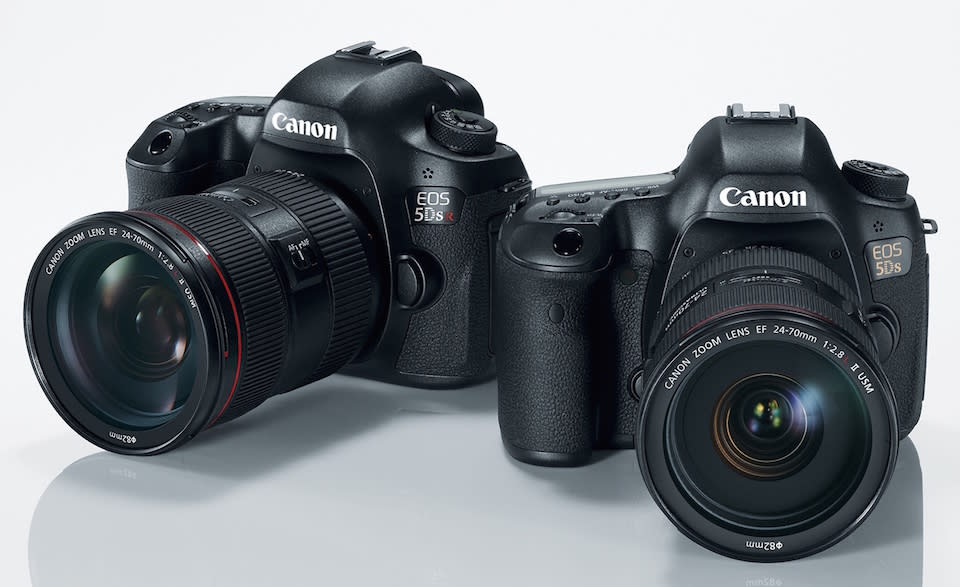Canon's 5Ds and 5Ds R have whopping 50.6-megapixel sensors

Yes, dear readers, the rumors are true: Canon has two new flagship DSLR cameras. Enter the 5Ds and 5Ds R, each packing a massive 50.6-megapixel full-frame sensor -- which, at first glance, is clearly the specification that stands out the most. But there's more to these beasts, naturally, starting with a Dual DIGIC 6 image processor inside, plus a 3.2-inch fixed LCD (same as on the 5D Mark III), 61-point autofocus, cropped shooting mode and an overhauled chassis that's designed to minimize camera shake as well as improve stability. What's more, both cameras have a built-in time lapse feature, up to 5 fps high-speed, continuous shooting and a revamped intelligent view finder that can cover nearly 100 percent of the field of view -- similar to the one found on the recently released 7D Mark II. Meanwhile, a freshly implemented lock and lag setting lets you control the timing between the mirror (which is now motor-driven) and the shutter, allowing the cameras to offer interval options of 1/8, 1/4, 1/2, 1 and 2 seconds.
There's also USB 3.0, CF and SD card support, as well as 1080p video at 24, 25 and 30 fps (720p up to 60 fps) -- sorry, folks, no 4K here. Canon says that, along with being the highest-resolution DSLRs available in 35mm format, the noise levels from the 5Ds and 5Ds R are better than the 5D Mark II and on par with the 7D Mark II. The native ISO range is 100-6,400, and that may end up disappointing a few people. Something else it borrows from its 7D sibling is the Automatic Exposure system, which can compensate for certain flickering light sources -- this is particularly useful for people who like to capture lit-up objects that standout from a particular setting, like star trails or a the lights of a moving car at night.
So, what's the difference between the two, you ask? It's simple: side by side, they're virtually identical, but the higher-end 5Ds R eliminates the low-pass filter effect and, as Canon puts it, creates a "cancellation effect" designed to cut the blur from images and make them sharper -- on the 5Ds, the low-pass filter does that too, but to a very thorough degree. In other words, the 5Ds R acts as if it doesn't have a low-pass filter. Either way, both of them look solid on paper, and there's no doubt that they'll each have no shortage of suitors.
As expected, you'll have to break the bank if you're interested in either one of these, though. Body-only, the 5Ds and 5Ds R will be available for $3,700 and $3,900, respectively, when they hit shelves in June. It's worth noting that these won't be replacing the 5D Mark III, but rather are being added as part of Canon's family of high-end DSLRs.
And just in case that wasn't enough for you, Canon also introduced some glass to go with its 5Ds and 5Ds R. It's the 11-24mm f/4L USM, an ultra wide-angle, aspherical lens that the company claims has the largest diameter (roughly a 126-degree angle of view) ever made for the DSLR category. It's a beauty in every sense of the word, to say the least. But, because you get what you pay for, be prepared to have to shell out $3,000 when it goes on sale at the end of this month.











